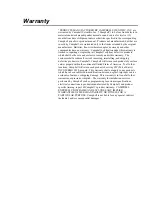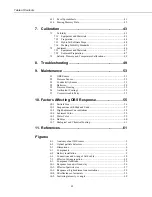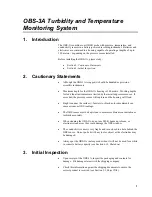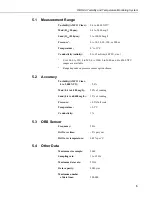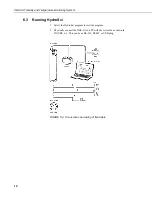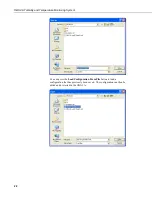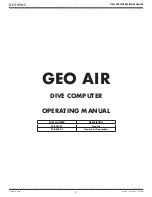
OBS-3A Turbidity and Temperature Monitoring System
TABLE 6-1. Working and Maximum Depths
Pressure Sensor
Working Depth
Maximum Depth
0.2 Bar
0 to 2 meters
3 meters
1 Bar
0 to 10 meters
15 meters
5 Bar
0 to 50 meters
75 meters
10 Bar
0 to 100 meters
150 meters
20 Bar
0 to 200 meters
300 meters
(1 Bar = 10 dBar
≅
10 meters of fresh water)
Schemes for mounting the OBS-3A will vary with applications; however, the
same basic precautions should be followed to ensure the unit is not lost or
damaged.
•
The most important general precaution is to
orient the unit so that the
OBS sensor “looks” into clear water
without reflective surfaces.
•
Nearly all exposed parts of the instrument are made of Delrin®, a strong
but soft plastic. Always
pad the parts of the OBS-3A housing that will
contact metal or other hard objects
with electrical tape or neoprene.
Expanded polyethylene tubes make excellent padding.
•
Never mount the instrument by the end-caps or attach anything to them.
This could stress the screws holding the unit together, cracking either the
end-caps or pressure housing, and cause a leak.
Moorings
The most convenient means for mounting the unit to a frame or wire is to use
large high-strength nylon cable ties (7.6 mm or 0.3 in width) or stainless steel
hose clamps. Use at least six cable ties or two hose clamps for redundancy.
Position the clamps on the inner 2/3rds of the pressure tube, labeled “USE
HOSE CLAMPS HERE”, so stress is not transmitted to the ends (see FIGURE
5-1.). First cover the area(s) to be clamped with tape or 2 mm (1/16 in)
neoprene sheet. Clamp the unit to the mounting frame or wire using the
padded area. Do not tighten the hose clamps more than necessary to produce a
firm grip. Over tightening may crack the pressure housing and cause a leak.
Use spacer blocks when necessary to prevent chafing the unit with the frame or
wire.
Surveys
The OBS-3A will usually be towed from a cable harness for surveys. The
serial cable supplied with the unit is strong enough to tow the OBS-3A and a
5-kg depressor weight; however, the towing forces must be transmitted to the
pressure housing and not to the connector. To provide strain relief for the
connector, attach a cable grip about 30 cm above the SUBCONN® connector
(FIGURE 6-1) and attach a short length of 3 mm (1/8 in) wire rope to the cable
grip. Clamp the wire rope to the pressure housing in the clamping area with
two stainless steel hose clamps. Provide a small loop of slack cable between
7



